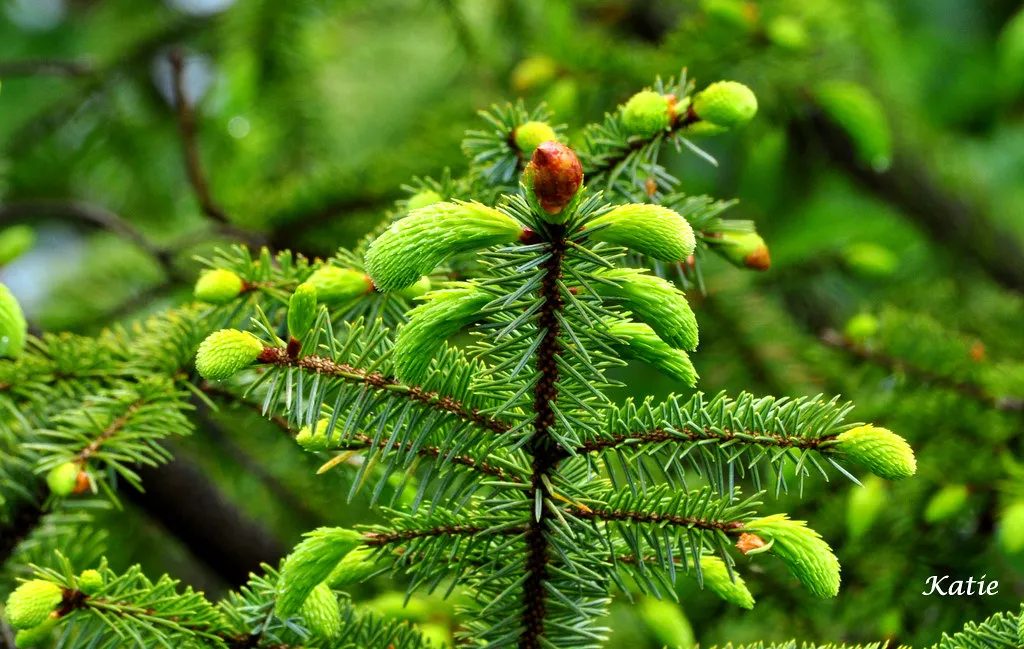Yes, you can transplant wild ferns. Ensure you follow proper guidelines to help them thrive in their new location.
Wild ferns are beautiful additions to any garden. They add a touch of natural elegance and thrive in shaded areas. Transplanting wild ferns requires careful attention to ensure their survival. Choose a spot with similar conditions to their original habitat.
Dig around the fern clump, taking care to preserve the root ball. Keep the roots moist during the move. Plant the fern at the same depth it was growing before. Water it thoroughly and mulch around the base. With proper care, your transplanted wild ferns can flourish and become a stunning part of your garden landscape.
Introduction To Wild Ferns
Wild ferns add a touch of magic to any garden. With their delicate fronds and lush greenery, they bring a sense of calm and natural beauty. In this section, we explore the fascinating world of wild ferns and answer the question: Can I transplant wild ferns?
Fascination With Ferns
Ferns are among the oldest plants on Earth. They have been around for millions of years. Their intricate leaves, called fronds, captivate many gardeners. These plants thrive in shady, moist conditions, making them perfect for woodland gardens.
Many people love ferns for their unique appearance. They add texture and depth to any garden. Ferns are also low-maintenance. They don’t require much care, which is perfect for busy gardeners.
Common Wild Fern Species
There are many types of wild ferns. Here are some common species:
- Bracken Fern (Pteridium aquilinum): This fern has large, triangular fronds. It grows well in open woodlands.
- Maidenhair Fern (Adiantum): Known for its delicate, fan-shaped fronds. This fern prefers shady, moist areas.
- Ostrich Fern (Matteuccia struthiopteris): This fern has tall, feathery fronds. It can tolerate some sunlight.
- Christmas Fern (Polystichum acrostichoides): This evergreen fern has leathery, dark green fronds. It is often found in woodlands.
- Lady Fern (Athyrium filix-femina): This fern has finely divided, lacy fronds. It grows best in moist, shaded areas.
| Fern Species | Frond Description | Preferred Habitat |
|---|---|---|
| Bracken Fern | Large, triangular | Open woodlands |
| Maidenhair Fern | Delicate, fan-shaped | Shady, moist areas |
| Ostrich Fern | Tall, feathery | Some sunlight |
| Christmas Fern | Leathery, dark green | Woodlands |
| Lady Fern | Finely divided, lacy | Moist, shaded areas |
Transplanting wild ferns can be a rewarding project. It allows you to bring a piece of the wild into your garden. With proper care, these ferns can thrive in their new home.
Benefits Of Transplanting Wild Ferns
Transplanting wild ferns can be rewarding. These beautiful plants offer ecological and aesthetic benefits. Let’s explore the advantages of bringing wild ferns into your garden.
Ecological Advantages
Wild ferns help in stabilizing soil. Their roots prevent soil erosion. They maintain moisture levels in the soil. This benefits other plants around them.
Ferns also provide habitats for small animals and insects. They support a healthy ecosystem. Introducing wild ferns can increase biodiversity in your garden.
Aesthetic Appeal
Ferns add a lush, green look to any garden. Their delicate fronds are visually pleasing. They create a sense of tranquility and natural beauty.
Ferns are versatile. They can thrive in shady spots where other plants struggle. This makes them perfect for filling tricky areas in your garden.
| Ecological Benefits | Aesthetic Benefits |
|---|---|
|
|
Legal And Ethical Considerations
Transplanting wild ferns can be a rewarding experience. But, it’s crucial to understand the legal and ethical factors involved. This ensures that you are acting responsibly and preserving nature for future generations. In this section, we will explore these important aspects.
Regulations On Wild Plant Harvesting
Before you dig up any wild ferns, check local laws. Some regions have strict rules about wild plant harvesting. You might need a permit. If caught without one, you could face fines or penalties.
- Check local environmental laws.
- Get a permit if required.
- Respect private property boundaries.
National and state parks often have stricter rules. Harvesting plants from these areas is usually illegal. Always respect protected lands and wildlife habitats.
Sustainable Practices
Sustainable practices help protect wild fern populations. Follow these tips to ensure you’re not harming the environment:
- Take only a small number of ferns from each location.
- Leave enough ferns behind to allow for regrowth.
- Choose healthy plants that are more likely to survive the transplant.
Always use clean tools to prevent the spread of disease. Avoid disturbing the surrounding ecosystem. Refill holes and leave the area as you found it.
By following these guidelines, you can enjoy your new ferns while protecting nature.
Choosing The Right Location
Transplanting wild ferns can be a rewarding experience. Choosing the right location is crucial for their survival and growth. This section will guide you on how to select the perfect spot for your ferns.
Ideal Soil Conditions
Wild ferns thrive in soil that is rich and well-drained. The soil should have a good mix of organic matter. You can add compost or leaf mulch to enrich the soil. Ferns prefer slightly acidic soil with a pH of 6.0 to 7.0. Avoid soil that retains too much water, as this can lead to root rot.
| Soil Type | Ferns’ Preference |
|---|---|
| Rich in organic matter | Highly preferred |
| Well-drained | Highly preferred |
| Slightly acidic (pH 6.0-7.0) | Preferred |
| Waterlogged | Not preferred |
Sunlight And Shade Requirements
Wild ferns grow best in shaded areas. They prefer indirect sunlight. Direct sunlight can scorch their delicate fronds. Place them in areas where they can get dappled light. A spot under a canopy of trees is ideal. Make sure they are protected from harsh afternoon sun.
- Shaded areas: Ferns thrive here.
- Indirect sunlight: Best for their growth.
- Dappled light: Ideal for wild ferns.
- Protection from afternoon sun: Essential for their well-being.
Preparation Before Transplanting
Transplanting wild ferns can be a rewarding task. Proper preparation ensures your ferns thrive in their new location. Follow these steps to make your transplanting process smooth and successful.
Tools And Materials Needed
Having the right tools makes transplanting easier and more efficient. Here are the essential tools and materials you’ll need:
- Shovel or spade: For digging up the ferns.
- Pruning shears: To trim any damaged fronds.
- Bucket of water: Keeps the roots moist during the move.
- Compost or organic matter: Enriches the new soil.
- Gardening gloves: Protects your hands while working.
- Mulch: Helps retain moisture in the new location.
Timing For Best Results
Timing is crucial for successful fern transplanting. Follow these tips for the best results:
- Early spring or fall: These seasons are ideal for transplanting. The weather is cooler, and the ferns are less stressed.
- After rainfall: The soil is moist and easier to work with. It helps the ferns establish in their new home.
- Morning or late afternoon: Avoid the heat of midday. Cooler temperatures reduce stress on the plants.

Credit: www.countryliving.com
Step-by-step Transplanting Guide
Transplanting wild ferns can be a rewarding activity. Follow this step-by-step guide to ensure success. Let’s dive into the details of digging up and replanting these beautiful plants.
Digging Up The Fern
Step 1: Choose a healthy fern. Look for vibrant green leaves. Avoid ferns with brown or wilted fronds.
Step 2: Water the fern area. This softens the soil. It makes digging easier.
Step 3: Use a spade or shovel. Dig around the fern. Keep a distance of 6 inches from the base.
Step 4: Dig deep enough. Try to get most of the root ball. This helps the fern adapt better.
Step 5: Gently lift the fern. Shake off excess soil. Be careful not to damage the roots.
Replanting Process
Step 1: Choose a shaded spot. Ferns thrive in low light. Avoid direct sunlight.
Step 2: Prepare the soil. Ensure it is moist and rich in organic matter. You can add compost for better results.
Step 3: Dig a hole. Make it twice as wide as the root ball. The depth should match the fern’s original planting depth.
Step 4: Place the fern in the hole. Ensure the crown is level with the soil surface. Spread the roots gently.
Step 5: Fill the hole with soil. Press gently to remove air pockets. Water the fern thoroughly.
Step 6: Add mulch around the base. This retains moisture. It also keeps weeds away.
Transplanting wild ferns can be easy with these steps. Enjoy your lush, green garden!
Post-transplant Care
Transplanting wild ferns can transform your garden into a lush paradise. Proper care after transplanting is crucial for their survival and growth. Let’s dive into the essential aspects of post-transplant care.
Watering And Fertilization
Wild ferns thrive in moist environments. Ensure the soil stays consistently damp.
- Water the ferns immediately after transplanting.
- Maintain regular watering during the first few weeks.
- Avoid overwatering; roots need oxygen too.
Fertilization should be gentle and balanced. Over-fertilizing can harm the ferns.
| Frequency | Type of Fertilizer |
|---|---|
| Every 6-8 weeks | Slow-release, balanced fertilizer |
| Early spring and late summer | Organic compost |
Pest And Disease Management
Wild ferns are hardy, but they can still face pests and diseases.
- Inspect the ferns regularly for any signs of pests.
- Common pests include aphids and slugs.
- Use natural pest control methods like neem oil.
Diseases can also affect ferns, especially fungal infections.
- Ensure proper air circulation around the plants.
- Avoid watering the leaves directly.
- Use fungicides if necessary.
Monitoring and quick action can keep your ferns healthy and thriving.

Credit: www.hometalk.com
Common Mistakes To Avoid
Transplanting wild ferns can be a rewarding experience. But, it comes with challenges. Avoiding common mistakes ensures healthy, thriving ferns.
Overwatering Issues
Many gardeners make the mistake of overwatering wild ferns. Ferns love moisture. But, too much water can be harmful.
Signs of overwatering include:
- Yellowing fronds
- Mushy roots
- Fungus growth
Water the ferns only when the soil feels dry. This helps prevent root rot and other water-related issues.
Incorrect Soil Ph
Another common mistake is planting ferns in soil with the wrong pH level. Ferns usually prefer slightly acidic soil. A pH level between 5.5 and 6.5 is ideal.
To ensure the correct pH level:
- Test your soil using a pH kit.
- Adjust the pH if needed. Add lime to raise pH or sulfur to lower it.
Maintaining the right pH helps ferns absorb nutrients effectively.
| Common Mistake | Effect | Solution |
|---|---|---|
| Overwatering | Yellowing fronds, mushy roots | Water when soil is dry |
| Incorrect Soil pH | Poor nutrient absorption | Test and adjust soil pH |
Expert Tips For Successful Transplanting
Transplanting wild ferns can be a rewarding garden project. With the right tips, you can ensure these beautiful plants thrive in their new home. Below, we provide expert advice to help your ferns grow successfully.
Experienced Gardener Insights
Experienced gardeners know the best time to transplant ferns. The ideal time is during early spring or late fall. This helps the ferns establish roots before extreme weather. Use a spade to gently dig around the fern. Keep as much soil around the roots as possible.
Transport the fern to its new location quickly. This prevents the roots from drying out. Plant the fern at the same depth as it was originally. Water the fern immediately after transplanting.
Long-term Fern Maintenance
Long-term maintenance ensures the health of transplanted ferns. Regular watering is crucial, especially during dry periods. Mulch around the base of the fern to retain moisture. This also helps keep the roots cool.
Ferns thrive in shaded areas. Protect them from direct sunlight. Fertilize sparingly with a balanced fertilizer. Too much fertilizer can harm the fern.
Watch for pests and diseases. Common pests include slugs and snails. Use organic pest control methods to keep them at bay. Regularly check for signs of disease and take action immediately.
| Task | Details |
|---|---|
| Best Time to Transplant | Early Spring, Late Fall |
| Watering | Regular, especially during dry periods |
| Mulching | Helps retain moisture and keep roots cool |
| Fertilization | Sparingly with balanced fertilizer |
| Pest Control | Organic methods for slugs and snails |
Conclusion And Final Thoughts
Transplanting wild ferns can be a rewarding garden activity. It brings a touch of nature’s beauty to your yard. Here, we wrap up with key points and encouragement for your gardening journey.
Recap Of Key Points
- Identify the fern species: Ensure it is suitable for your garden.
- Choose the right season: Spring and early fall are ideal.
- Prepare the site: Choose a shady, moist area.
- Dig carefully: Avoid damaging roots while transplanting.
- Water regularly: Keep the soil moist for the fern to thrive.
Encouragement For Gardeners
Gardening with wild ferns is a delightful adventure. Their lush, green fronds add charm to any garden. Remember, patience is key to success.
Keep experimenting and learning from each experience. Your garden will thank you with its beauty. Enjoy the process and happy gardening!

Credit: awaytogarden.com
Frequently Asked Questions
Can I Transplant Wild Ferns Successfully?
Yes, you can transplant wild ferns successfully. Choose a shady spot and ensure moist soil. Dig carefully to preserve roots.
When Is The Best Time To Transplant Ferns?
The best time to transplant ferns is early spring or fall. These seasons offer cooler temperatures and higher moisture levels.
How Do I Prepare Soil For Fern Transplanting?
Prepare soil by adding organic matter like compost. Ensure the soil is well-draining and slightly acidic for optimal growth.
Do Wild Ferns Need Special Care After Transplanting?
Yes, wild ferns need regular watering and shade after transplanting. Mulch to retain moisture and prevent weeds.
Conclusion
Transplanting wild ferns can be rewarding. With proper care, they can thrive in your garden. Ensure you follow the steps for successful transplantation. Enjoy the beauty and benefits of wild ferns in your outdoor space. Happy gardening!



